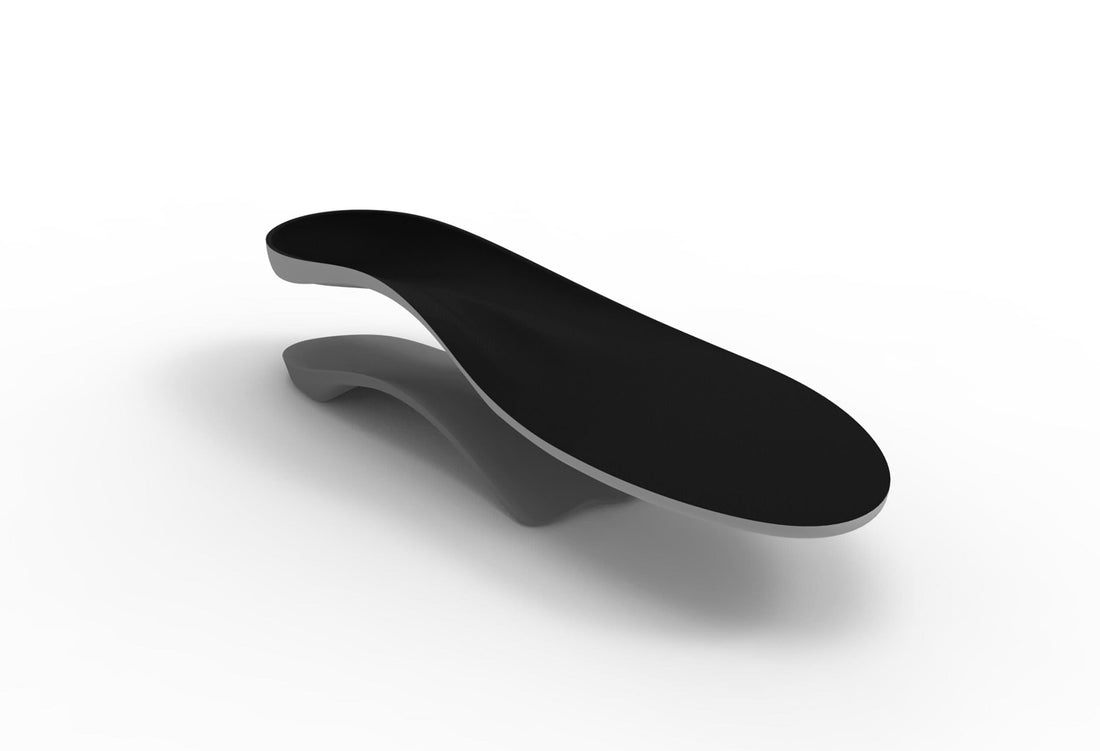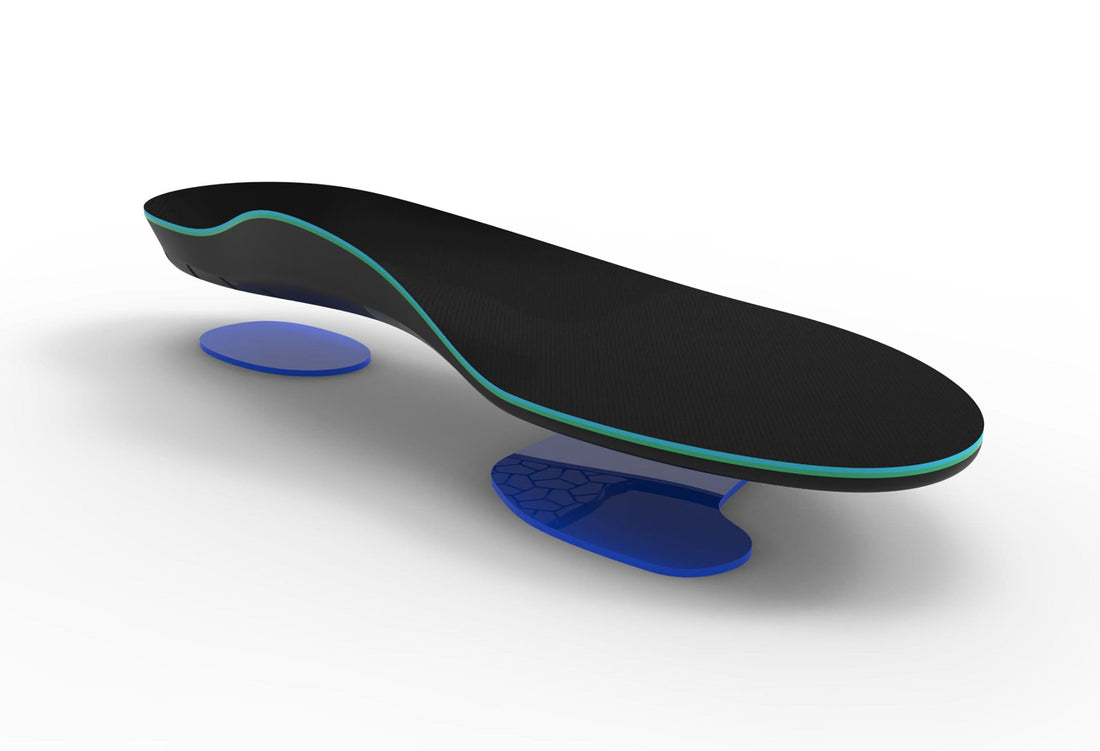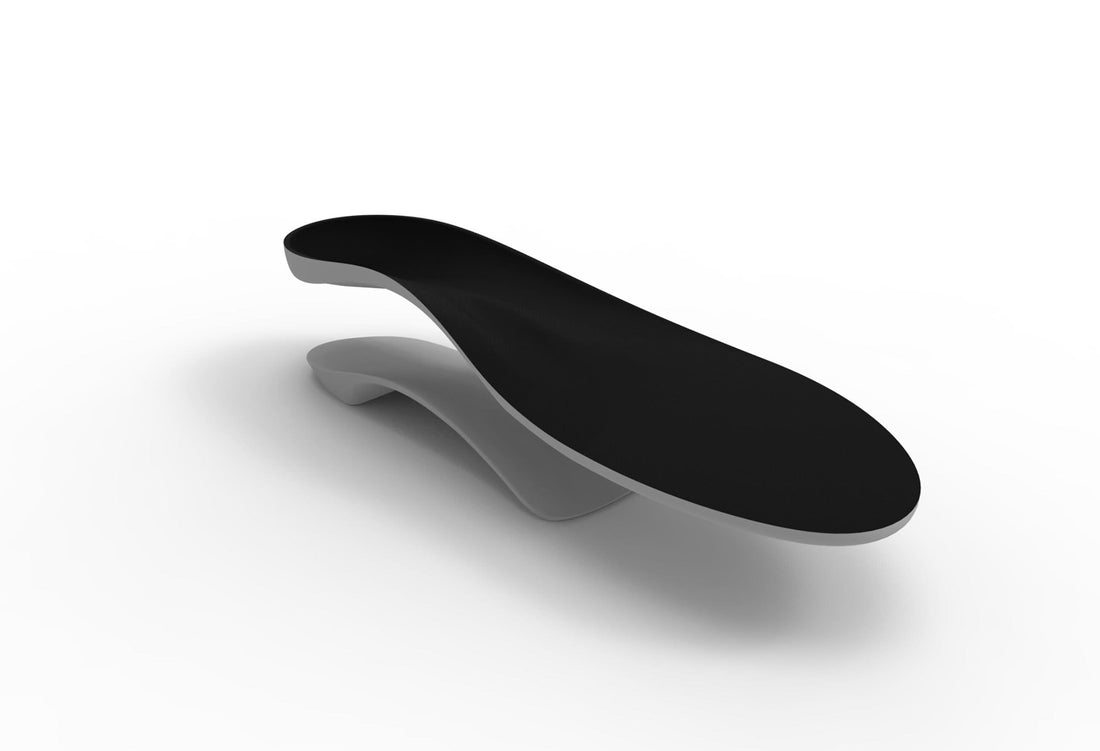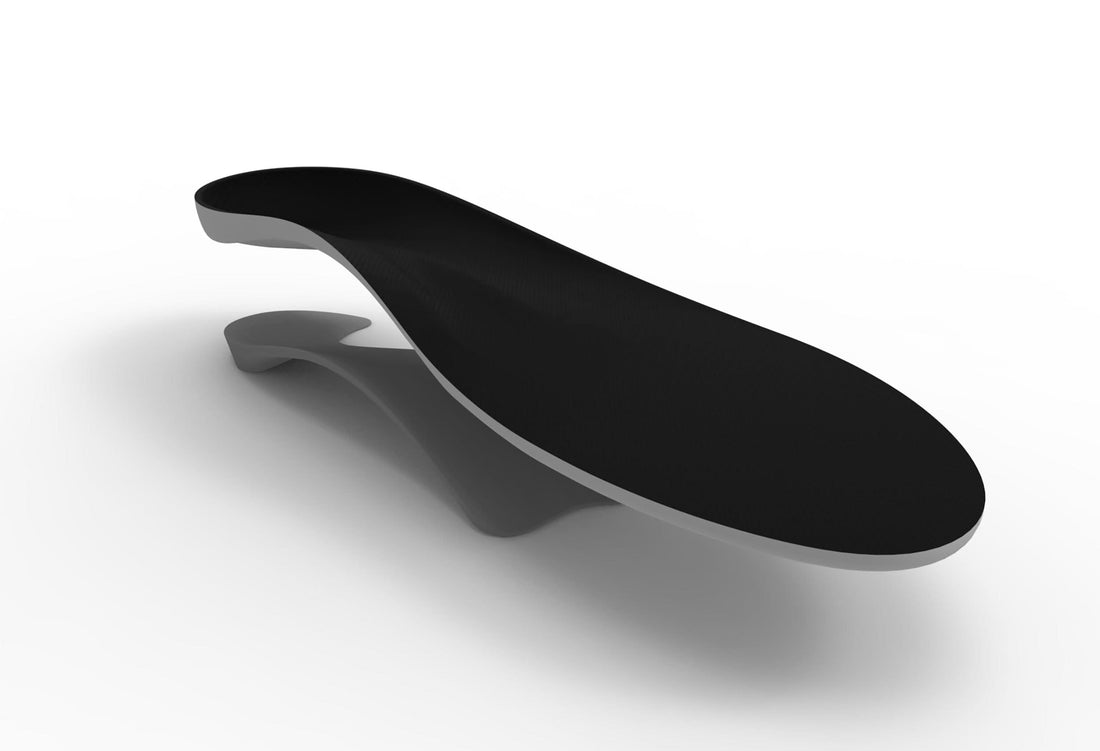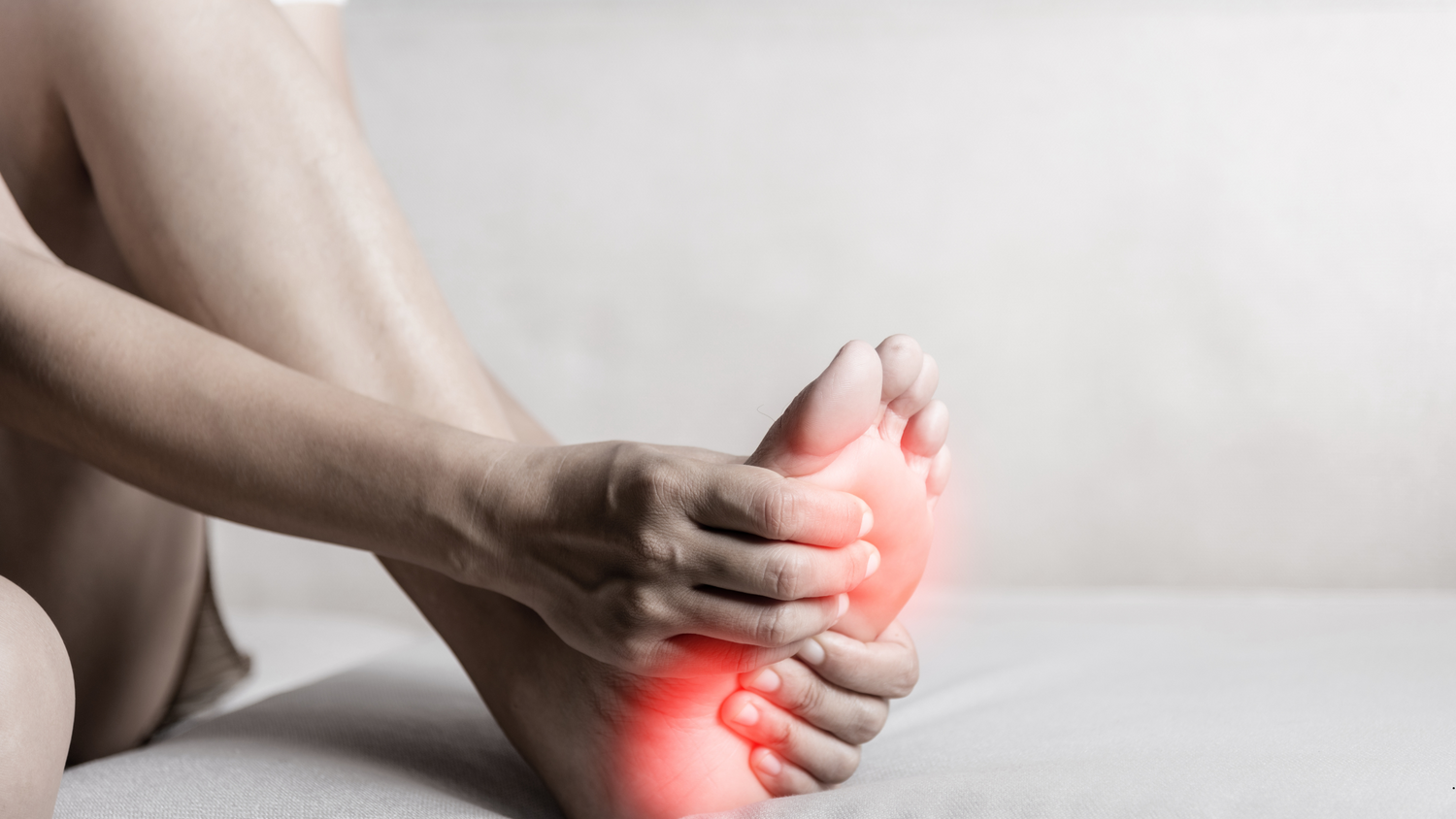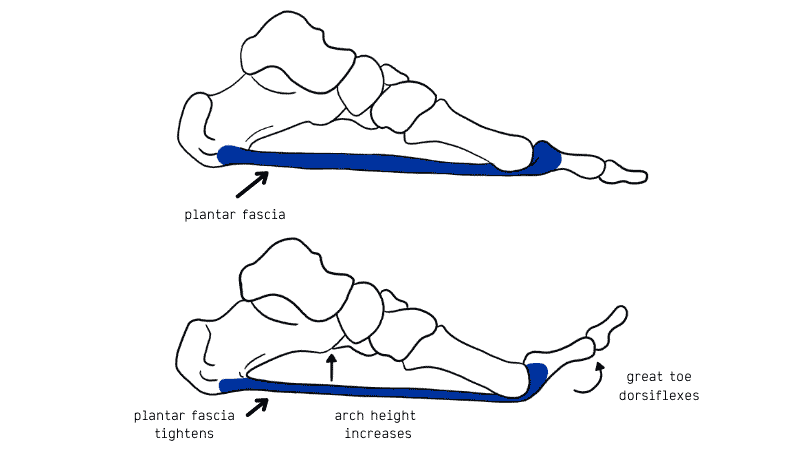The Interpod Foot Orthotic range is supported by independent research from: Duquesne University, Pittsburgh, PA, US Department of Podiatry, School of Human Biosciences, La Trobe University, Melbourne, Australia NHS Orthopaedic Department, UK
UNDERSTANDING Insoles
There are two main forces that act on the foot- the ground reaction force as the weight of the body strikes the ground and an intrinsic force generated by the contraction of muscle and momentum that occurs during supination to establish the Windlass Mechanism. Through a complex biomechanical system the body absorbs the vertical ground reaction force by transforming it into a rotational force controlled by the eccentric contraction of muscles found mainly in the lower leg. If these forces or stresses are too great then aches and pains can arise, potentially leading to an overuse injury. Effective orthotics are designed to reduce these two forces by r educing the rotational force, absorbing impact and facilitating the Windlass Mechanism.
This can be achieved through a combination of tested orthotic design features and the use of impact reducing materials.
For orthotic treatment to be successful and to achieve patient compliance, the practitioner should consider these factors:
1. Measure objectively supination resistance
2. Given the above, prescribe the minimum level of support to remove
symptoms
2. Use the correct orthotic shape for the patients desired footwear
3. Use durable but comfortable, shock absorbing materials
4. Be a cost effective treatment option
When to Use Orthotics
The decision to use orthotics depends on the patient history. Orthotics are used to treat overuse injuries by counteracting the cause. Orthotics can achieve this by providing a force to resist the excessive loads and also by facilitating the Windlass Mechanism during supination.
How Orthotics Work
The degree to which an orthotic inverts the foot is directly related to the arch height and rearfoot wedging. The higher the orthotic arch and the greater the amount of rearfoot wedging, the more support the orthotic has; therefore the more likely it is to reduce symptoms associated with overuse injuries. However, if they are made too high the orthotics can interfere become uncomfortable and are difficult to fit into shoes.
The goal of the practitioner
A flat orthotic or insole provides no added arch or rearfoot sup port and therefore will not improve patient symptoms. Conversely, a very high arch orthotic cannot fit into shoes, can may not be tolerated by patients. This means that within the range of a flat insole and high arched orthotic profile there exists clinically useable arch heights that provide support to remove patient symptoms.
The goal of the practitioner is to provide the patient with the lowest level of support to remove patient symptoms. This will encourage patient compliance to a treatment program. This is best achieved using the Keystone device. The length and width of the orthotic are given by the size of the patient's foot and the arch profile can be a generic shape that has been clinic ally shown to be comfortable and fit into the chosen footwear. In this way using Interpod, orthotic prescription for the practitioner can be immediate, cost effective and simplified while ensuring successful patient compliance and ultimately a successful outcome.
Success in your practice
The Interpod prefabricated orthotic range consists of three arch heights with a clinically designed arch profile.
The challenge for the practitioner is to link a clinical examination to their orthotic prescription.
Recent research shows that there is a weak relationship between Kinematics - biomechanical, gait examination, pressure readings, 3D scans and any other weight and non weight bearing exams -and the likelihood of a patient sustaining an overuse injury. The research found that the cause of injury is related to the Kinetics of movement - excessive loads or forces placed upon the working tissues.
The Keystone is a tool used to estimate the forces involved in the functioning of the foot. It is used to link results to the most suitable orthotic prescription and to determine the minimum level of support necessary to remove symptoms.
Using the Keystone also enables practitioners to communicate patient results objectively.


